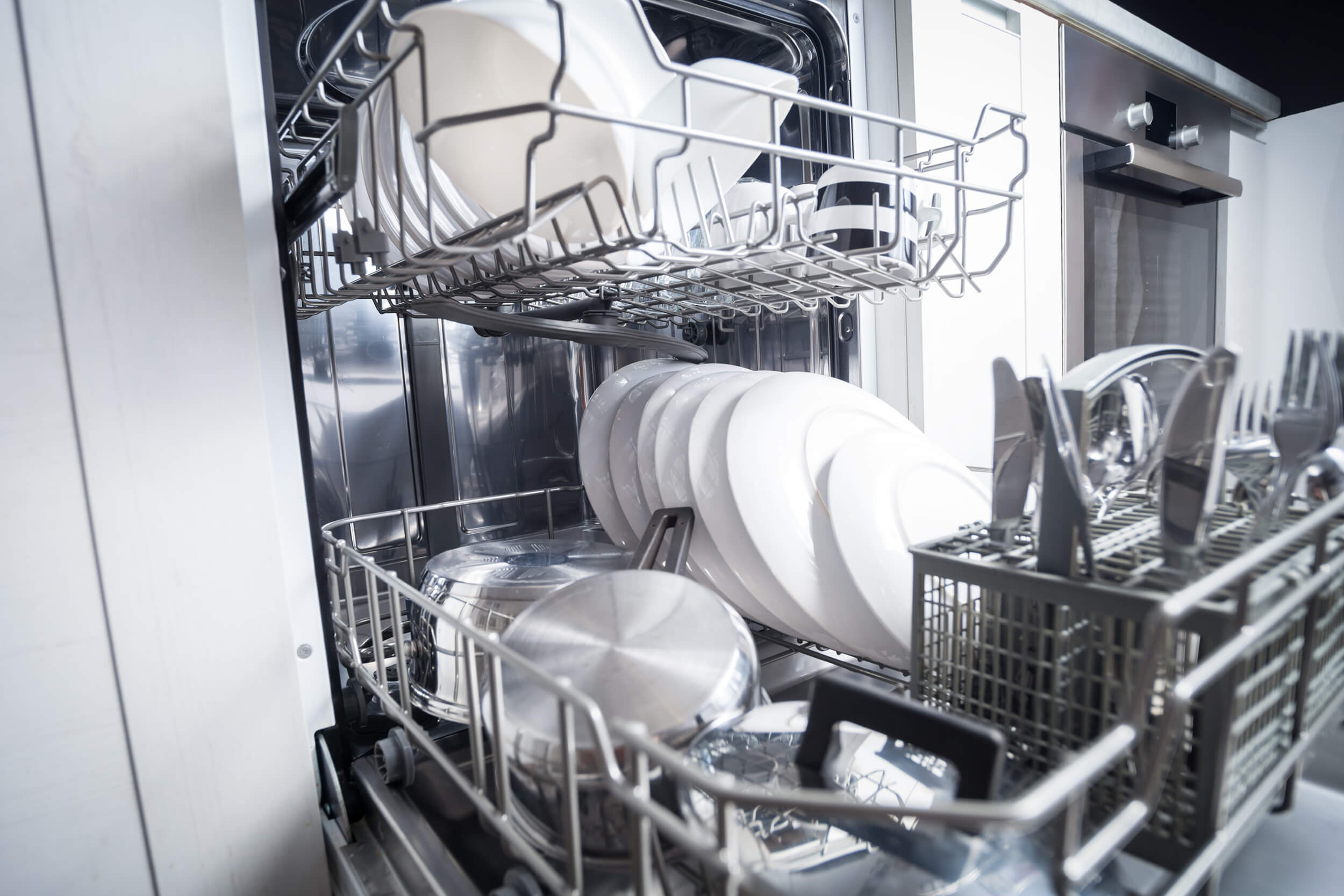Contact: Ben Somberg, 202-658-8129, bsomberg@aceee.org

Washington, DC—Large electric motors and household dishwashers would use less energy and cost less to run under Department of Energy (DOE) rules announced today.
The finalized standards for motors would save energy in a range of commercial and industrial uses. The proposed dishwasher standards would bring less efficient new models up to the energy and water efficiency performance of their leading peers. DOE also proposed updated energy-saving standards for beverage vending machines.
Motors
The very large motors at issue—used in pumps, fans, compressors, and other applications—require significant electricity use, often a large share of a facility’s total electric bill. But manufacturers have continued to improve motors’ efficiency. Manufacturers (represented by the National Electrical Manufacturers Association), efficiency advocates (American Council for an Energy-Efficient Economy, Appliance Standards Awareness Project, Natural Resources Defense Council, and Northwest Energy Efficiency Alliance), and utilities (Pacific Gas & Electric Company, San Diego Gas & Electric, and Southern California Edison) reached a consensus agreement for the updated standards and recommended them to DOE, which has now instituted them through a direct final rule.
The new standards would save American businesses up to $8.8 billion on utility bills and reduce carbon dioxide emissions by 92 million metric tons over 30 years of sales.
“The technology has gotten better and better, and these standards are going to help companies that use these motors meaningfully reduce their electric bills,” said Andrew deLaski, executive director of ASAP. “Bringing motor efficiency up to the levels required in Europe is going to help American manufacturers keep their costs competitive.”
Motor standards were last updated in 2014. The new standards set updated efficiency levels for 100–250 horsepower models and first-time efficiency requirements for 501–750 horsepower models.
Dishwashers
By reducing energy and water use in lower-efficiency models, the new dishwasher standards would save consumers nearly $3 billion on utility bills and reduce carbon dioxide emissions by 12.5 million metric tons over 30 years of sales. Most dishwashers that don't yet meet the proposed standard could be modified to do so by making changes in their programming, rather than physical design modifications, DOE's analysis found.
“The cleaning performance in most dishwashers today is excellent, but some models use a bunch more energy than others to achieve it. This standard would ensure that all models have the efficient technology and designs that don’t require a lot of energy but still clean superbly,” said deLaski. “All the major manufacturers already make models that meet these proposed levels, and they’d be the first to tell you they’re good products.”
Dishwashers’ water and energy use have decreased significantly over recent decades, thanks to federal standards and manufacturer innovations. Cleaning performance has improved in the same period. Consumer Reports expert reviewers say that today’s dishwashers “do such a good job at cleaning that new features don’t often change our test results much.” Wirecutter has found that “most dishwashers can completely clean a big load of greasy, starchy, kind-of-crusty dishes as long as you use a decent detergent and rinse aid.”
Several of today’s models that already meet the proposed efficiency standards have five-star cleaning performance ratings from Consumer Reports. And DOE conducted its own testing to ensure that products meeting the proposed standards clean dishes well; it found that dishwasher models that meet the proposed standard and provide good cleaning performance are readily available on the market today.
The proposed dishwasher standards continue to allow manufacturers to offer a “short cycle” option on their machines. These cycles sometimes use more energy; the existing and proposed standards do not regulate them. A Consumer Reports survey found that a majority of consumers do not choose to use this option, and only 6% choose it most of the time. Based on its own testing, DOE projected that the proposed standards would not have any substantial impact on the duration of a normal cycle.
DOE last updated efficiency standards for dishwashers in 2012. It was legally obligated to propose updated standards, if warranted, by 2019.
###
The Appliance Standards Awareness Project (ASAP) advocates for appliance, equipment, and lighting standards that cut planet-warming emissions and other air pollution, save water, and reduce economic and environmental burdens for low- and moderate-income households. ASAP’s steering committee includes representatives from environmental and efficiency nonprofits, consumer groups, the utility sector, and state government.




